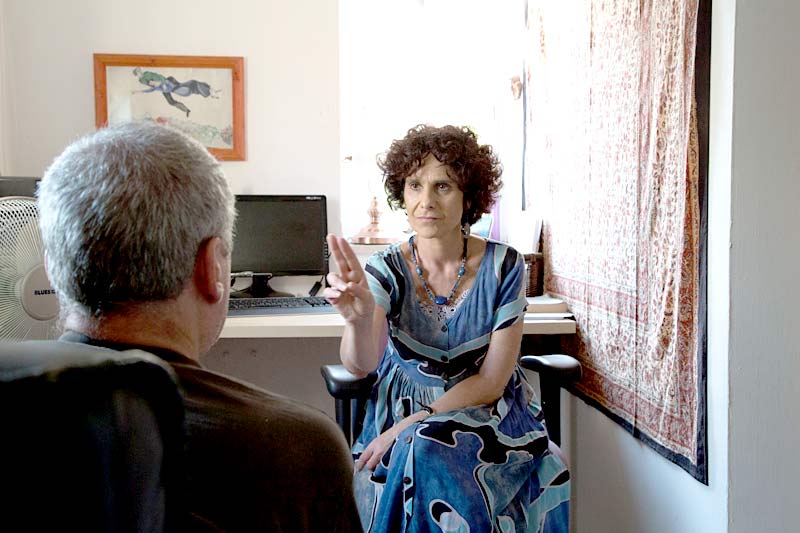
EMDR (Eye Movement Desensitization and Reprocessing) was a nontraditional and quite new style of psychotherapy in the late 80’s when it came my way. It rapidly became popular, especially for treating PTSD (post-traumatic stress disorder) and any kind of other smaller ‘T’ trauma. It has proven to be highly efficient and fast for people who have been suffering for years from symptoms that make their lives dysfunctional.
As the names says, it is based on the patient’s own rhythmic eye movements. It is said that the eye movements alternately stimulate both sides of the brain. The result is an evident reduction in the charge of the traumatic memories. On the other hand, the mind gets into a fast forward processing mode, captures what was happening in a clearer way, and makes a reframe of the original meaning we gave to the traumatic event. The new processed information is then ‘saved’ in a different place making a more functional experience possible so that one can utilize your own inner resources and go on living in a better and more serene way.
I had just been diagnosed with MS. The words had stick like tattoos in my brain: “incurable, degenerative, debilitating”. Orthodox medicine had nothing to offer me. Go home, put your things in order… and order yourself a wheelchair, I was told.
I was at a friend’s house in Cuernavaca, Mexico, when an American therapist whose specialty was EMDR came to visit. She was very interested in bringing EMDR to Mexico, would I help her? I had heard wonders about this modality but I had never experienced it myself. She offered to give me a session. I was in shock from the terrible news I had just received so I accepted her assistance immediately. My experience was a unique one.
I loved actually that I hardly even had to say much about what had happened in order to have the process occur and switch me and my experience internally.
It was a fascinating trip, like being taken on an ascending spiral. We started at a distressing memory and the negative belief I had acquired at that moment along with the sensations that the image stirred in me. My mind very fast associated, remembered and re-experienced, like in a huge tsunami. I went up in distress and down to deeply experienced fear, despair and helplessness. Then, as if the wave had swiped the shore clean, somehow, as if by magic, something inside me shifted; what started like “My life is over”, became an open question: “What now?” I had found the strength to go on. That shift was something that came from the depths or heights of my soul, not my logical mind. Right there and then I stopped suffering and started searching for what became my life from then on. I became an EMDR therapist myself and have helped and treated many people with it, especially those facing a difficult diagnosis.
33 years after I started that journey, I finally put my experience in writing in HOPE BEYOND ILLNESS where I offer a guide (with EMDR self-help tools at a high place) to help people live WELL with whatever cards were dealt to them. You may be fortunate to be living in a healthy body. But, in general, what persona alive does not have some chronic discomforts, maybe part of being an adult is that life itself becomes a “chronic condition”. In this book I share everything I found to help myself and others deal till you heal… in the true sense of the word.
~Shulamit Lando, TheraCoach (Psychotherapist, Life and Medical Coach)
